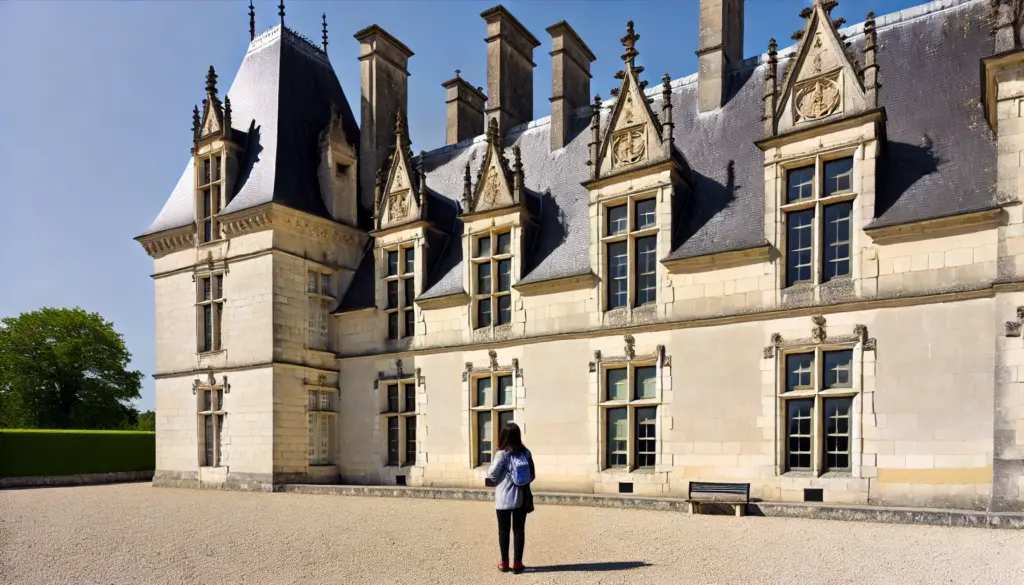ChatGPT:
Amboise is a charming town in the Loire Valley, France, known for its rich history, Renaissance architecture, and picturesque setting along the Loire River. The town is most famous for the Château d’Amboise, a stunning royal residence that offers panoramic views of the river and countryside. It was a favored residence of French kings in the 15th and 16th centuries and is the final resting place of Leonardo da Vinci, whose tomb is located in the chapel within the château grounds.
Nearby, the Château du Clos Lucé, where Leonardo da Vinci spent the last years of his life, is a major attraction. Visitors can explore da Vinci’s inventions and artworks in the museum dedicated to his life and legacy. The town itself features narrow cobblestone streets, half-timbered houses, lively markets, and cozy cafes, adding to its medieval charm.
Amboise also offers access to the broader Loire Valley, a UNESCO World Heritage site known for its many other historic châteaux, gardens, and vineyards. The local food scene includes traditional French cuisine with specialties from the region, such as goat cheese and wines from the Loire Valley.
The town is small but vibrant, making it a peaceful yet culturally rich destination for visitors seeking history, art, and scenic beauty.
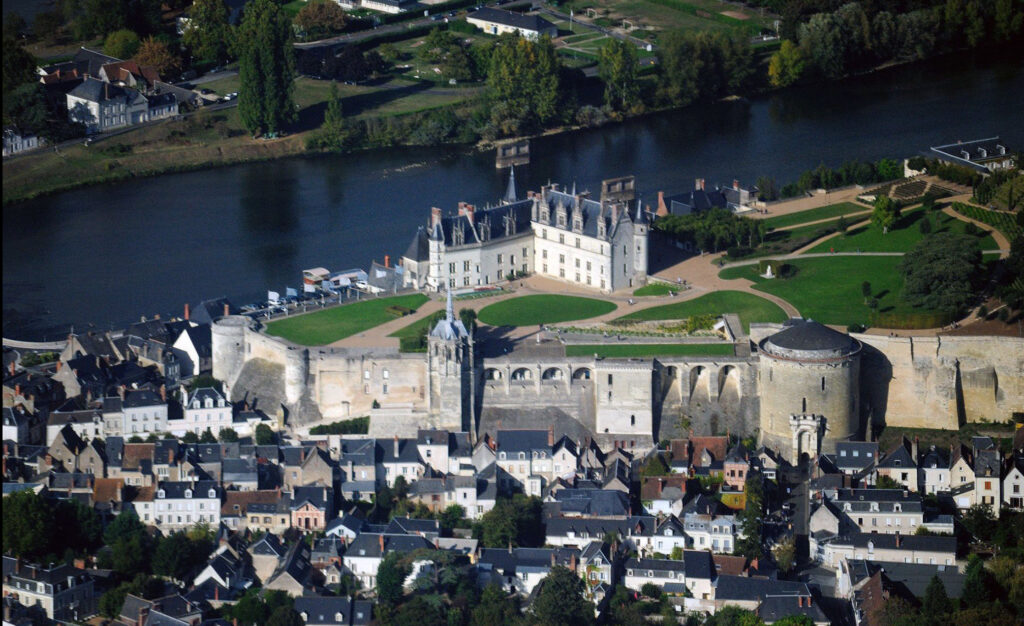
Château d’Amboise, perched on a promontory overlooking the Loire River, is one of the most historically significant and architecturally striking castles in France. It has a range of unique features that reflect its royal heritage and Renaissance design.
1. Strategic Location and Views
- The château is located atop a rocky hill, providing commanding views of the Loire River and surrounding countryside. This strategic position not only made it a fortress in medieval times but also offers visitors breathtaking panoramic views of the valley.
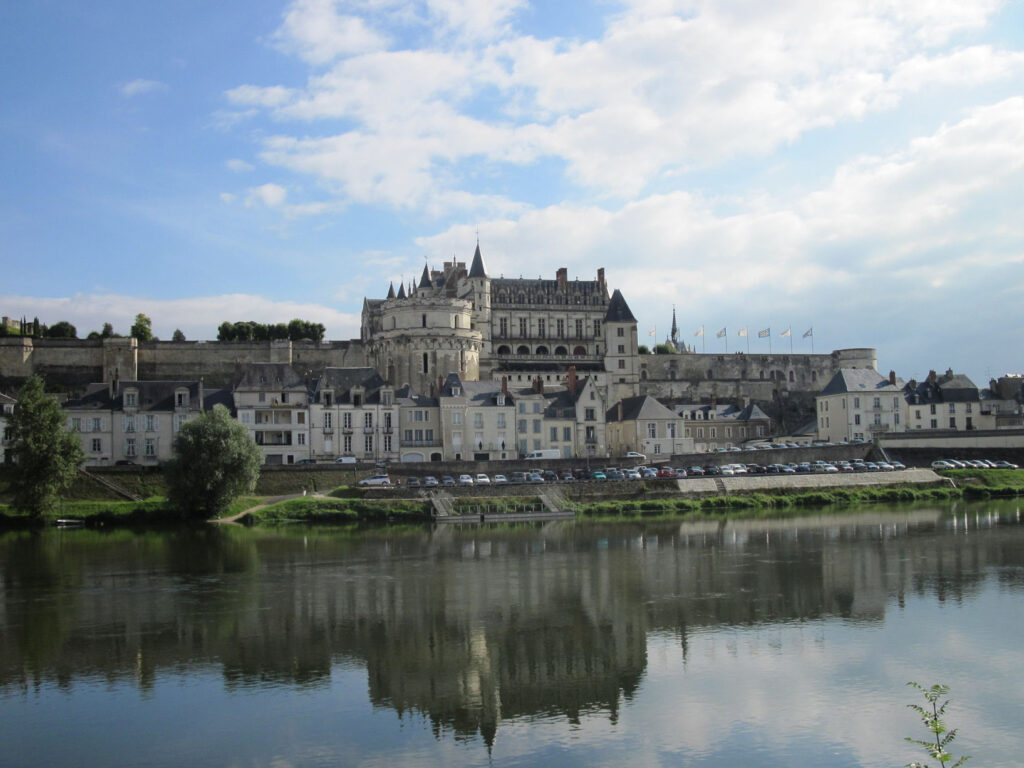
2. Royal Residence
- Château d’Amboise was a favored residence of French kings, particularly during the reigns of Charles VIII and Francis I. It became a symbol of royal power and Renaissance culture, hosting grand ceremonies and important events of the French court.
- The château’s transformation from a medieval fortress into a Renaissance palace is one of its defining aspects. Charles VIII initiated its renovation, introducing the elegance and sophistication of Italian Renaissance architecture to France.
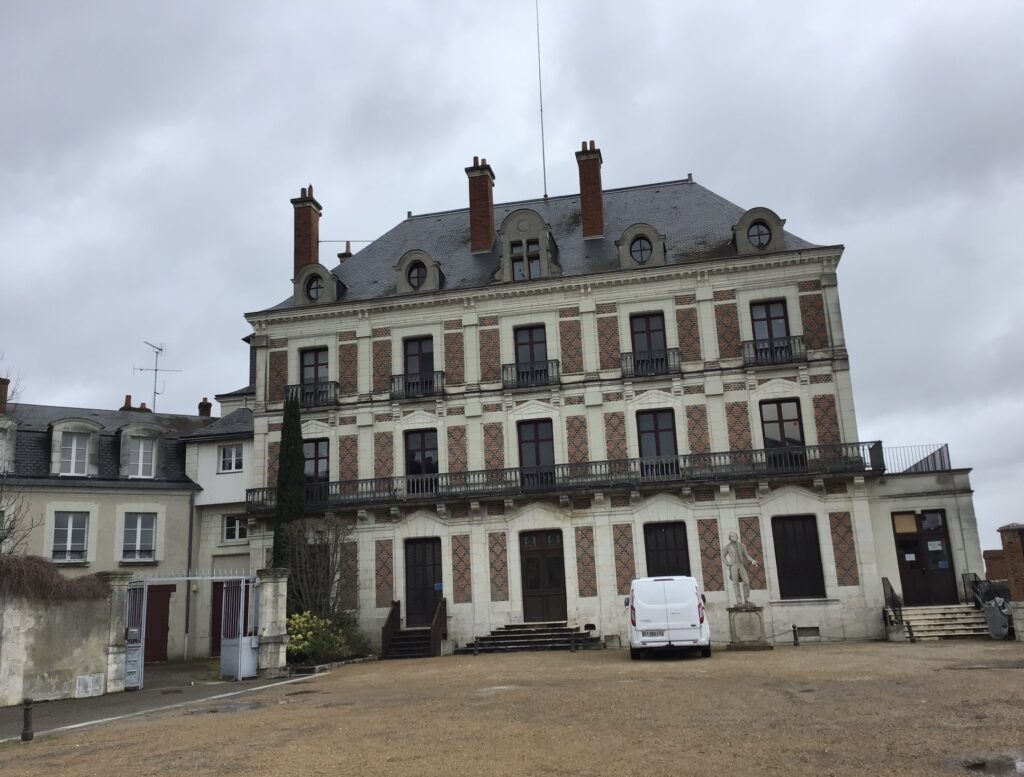
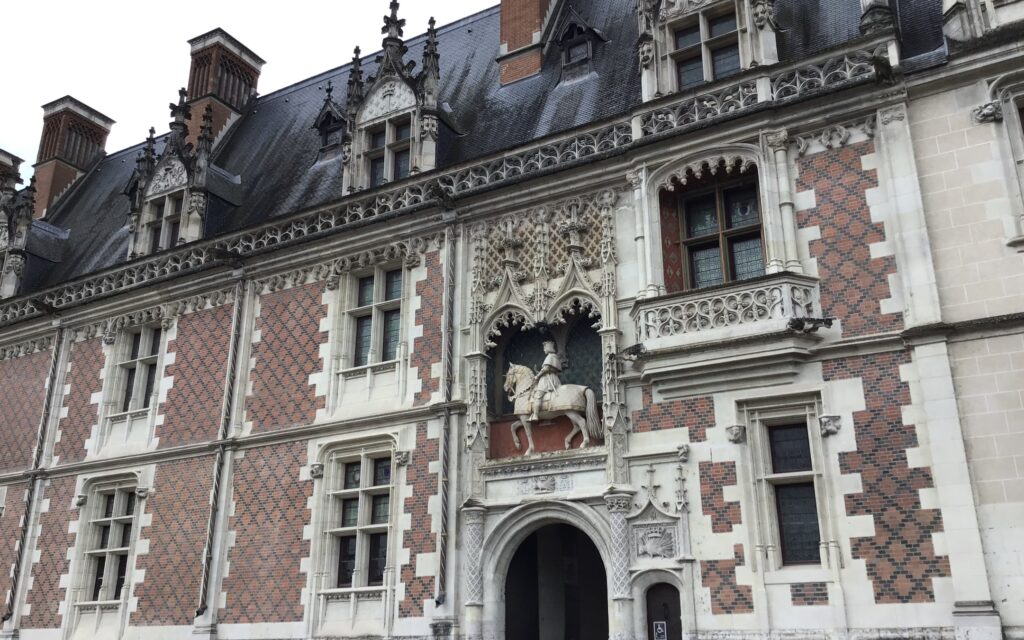
3. St. Hubert Chapel and Leonardo da Vinci’s Tomb
- The Chapel of Saint Hubert, located within the grounds, is a stunning example of Flamboyant Gothic architecture, featuring intricate carvings and delicate stonework. The chapel is notable for being the final resting place of Leonardo da Vinci, whose tomb lies inside. This gives the château a direct connection to the great artist and his legacy.
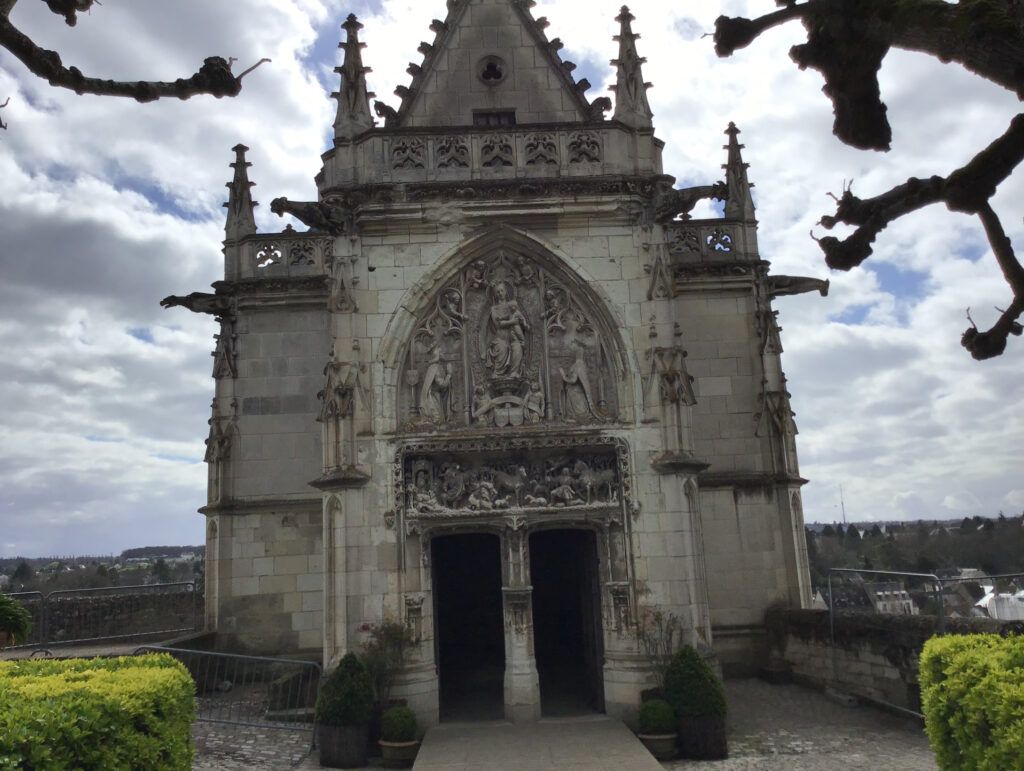
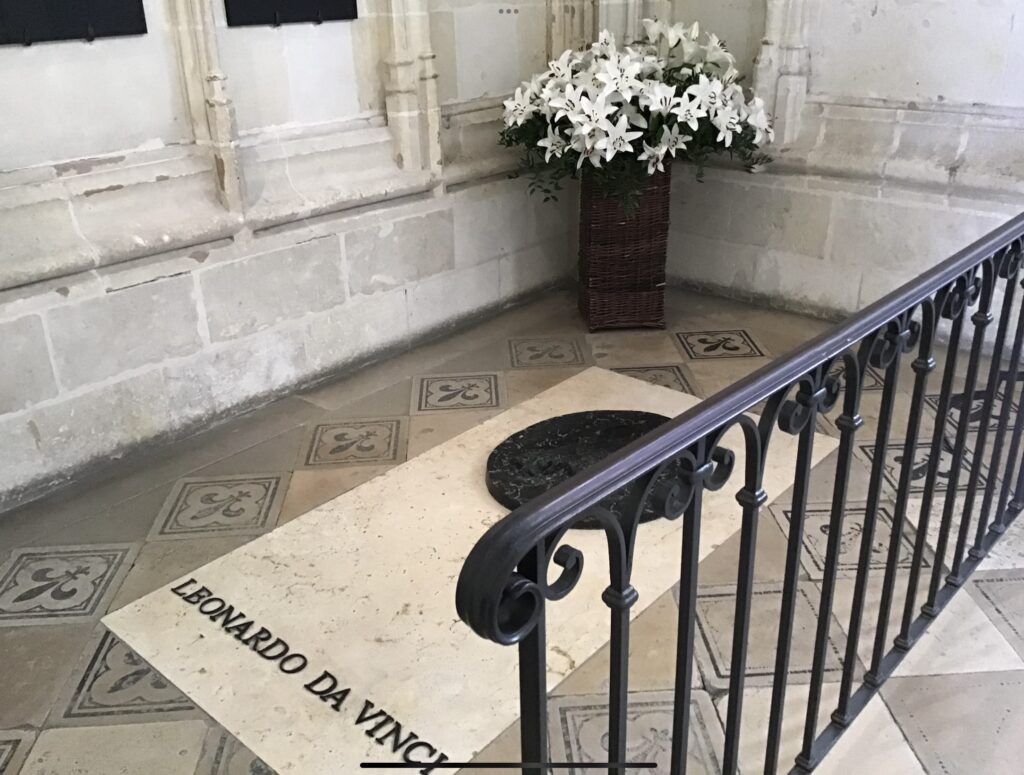
4. The Loggia and Renaissance Architecture
- One of the most unique architectural features of the château is its Italian-style loggia, which overlooks the Loire River. This gallery was inspired by Renaissance palaces in Italy and serves as a symbol of the influence of Italian art and culture, which Charles VIII and subsequent kings brought to the French court.
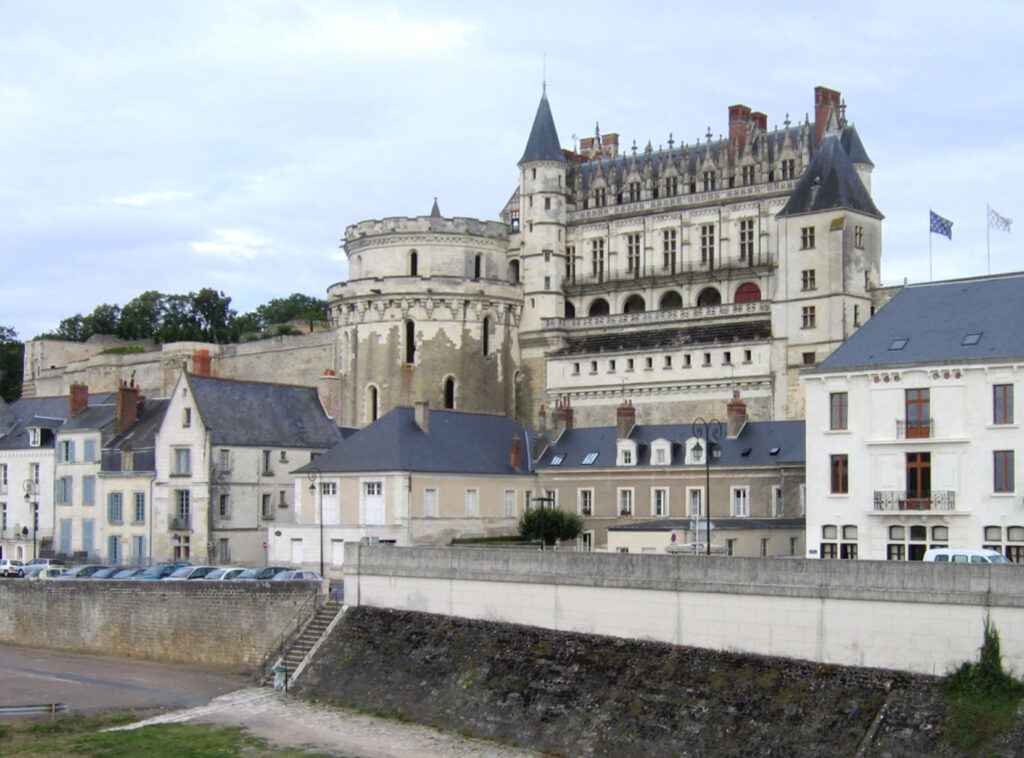
5. Gardens and Terraces
- The château is surrounded by beautifully landscaped gardens and terraces. These gardens, redesigned in the Renaissance style, offer serene walking paths lined with trees, flowerbeds, and fountains. The terraces provide sweeping views and are adorned with statues, creating an atmosphere of both tranquility and grandeur.
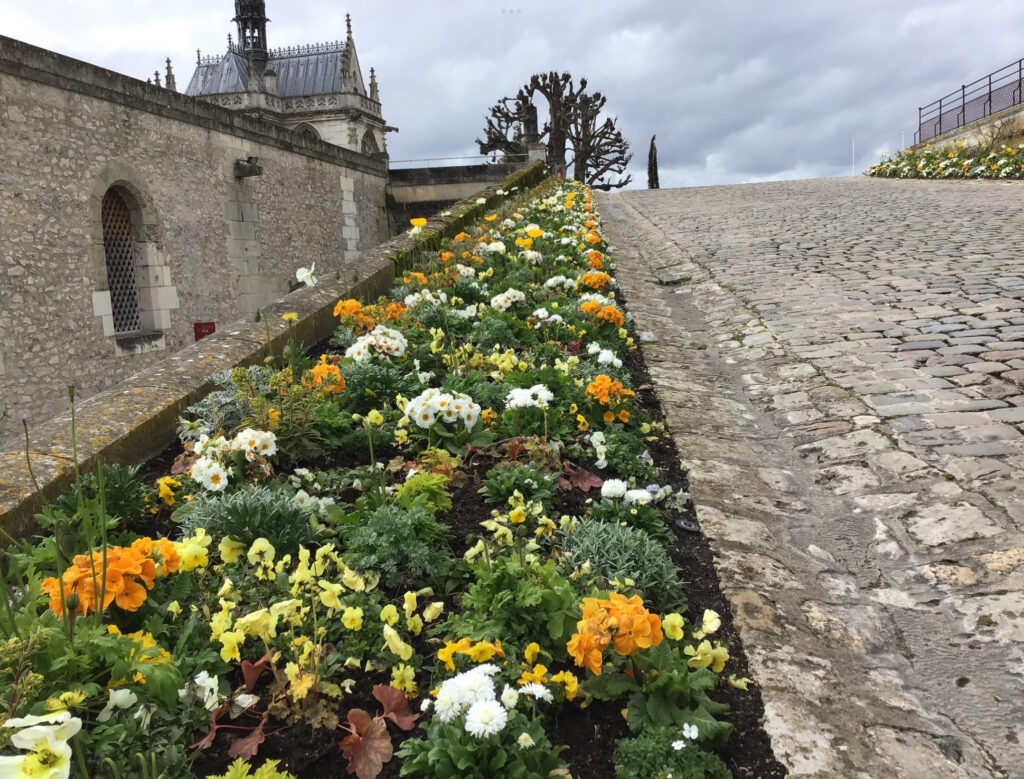
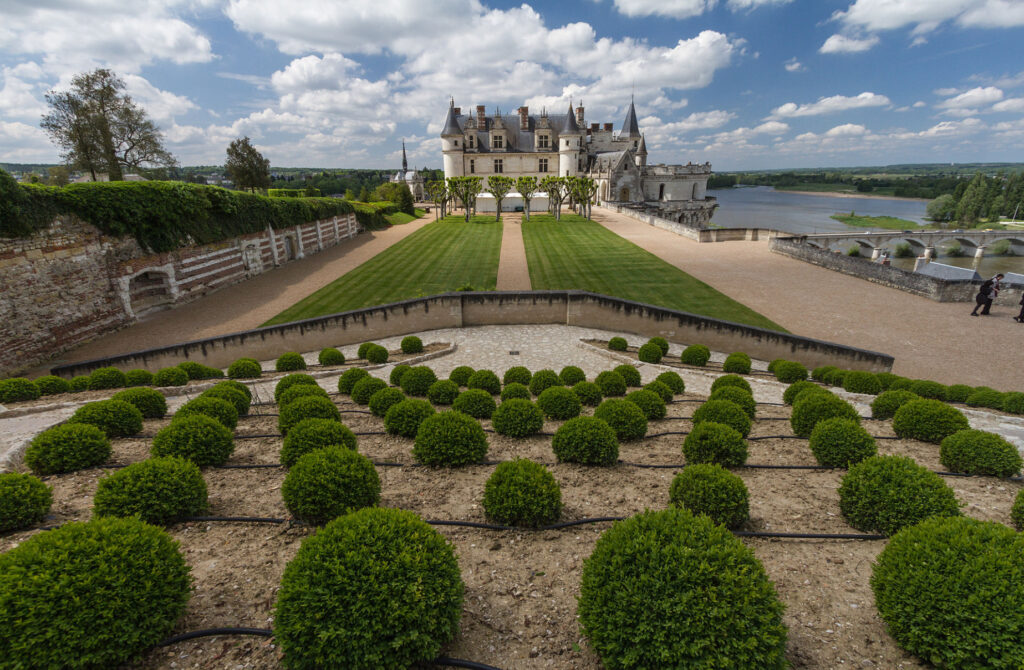
6. Fortifications and Medieval Elements
- Despite its Renaissance beauty, Château d’Amboise retains some of its medieval defensive features, including thick walls, towers, and bastions. Visitors can explore parts of the original medieval castle that highlight its strategic importance before it became a royal residence.
7. Tour des Minimes and the Cavalry Ramp
- One of the most distinctive aspects of the château is the Tour des Minimes, a large circular tower with a unique spiral cavalry ramp inside. This ramp was designed to allow horses and carriages to access the upper levels of the château directly. Visitors can walk up this extraordinary ramp and imagine the royal processions that once used it.
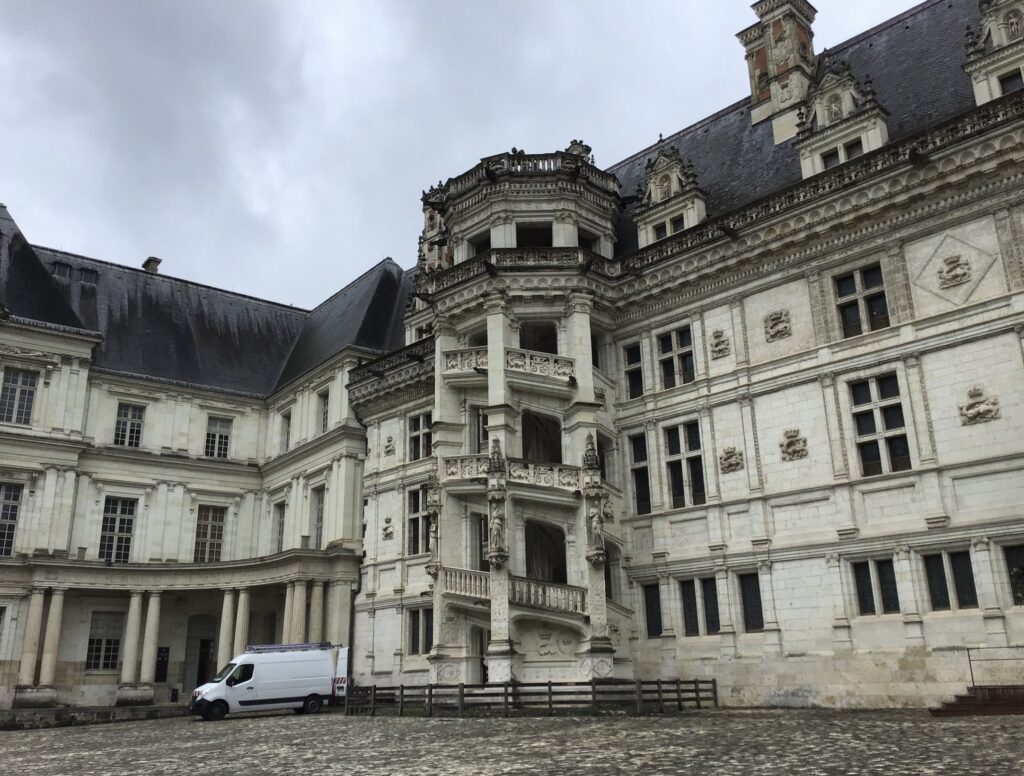
8. Historical Events and Figures
- The château was the site of many pivotal moments in French history. It was home to Francis I during his youth and a place where Catherine de’ Medici, Henry II, and the young future kings of France resided. It was also the setting for the infamous Amboise Conspiracy (1560), during which Huguenot conspirators attempted to abduct the young King Francis II.
9. Interior and Decorative Arts
- Inside, the château offers visitors a glimpse into royal life with its lavish rooms decorated with Renaissance tapestries, period furniture, and artworks. While much of the original interior was lost over centuries, careful restoration allows visitors to experience the grandeur of a French royal residence.
10. Balconies and Grand Halls
- The château’s grand halls and elegant balconies are designed for large-scale royal ceremonies and gatherings. The vast spaces are filled with natural light, offering both a sense of openness and intimacy. Visitors can imagine the pageantry that took place in these grand spaces during its heyday.
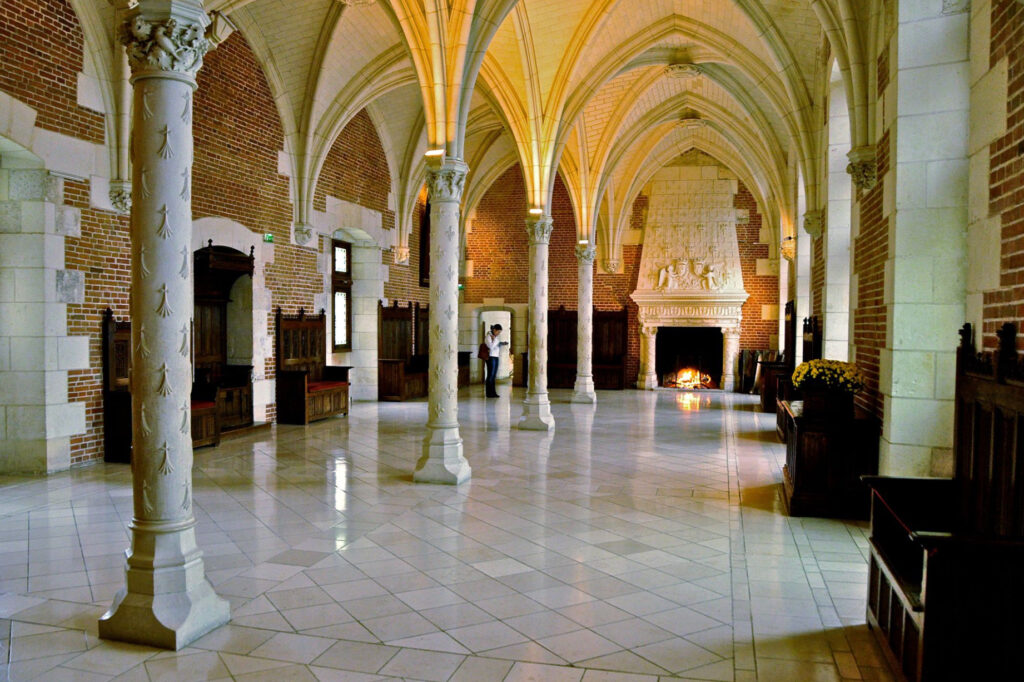
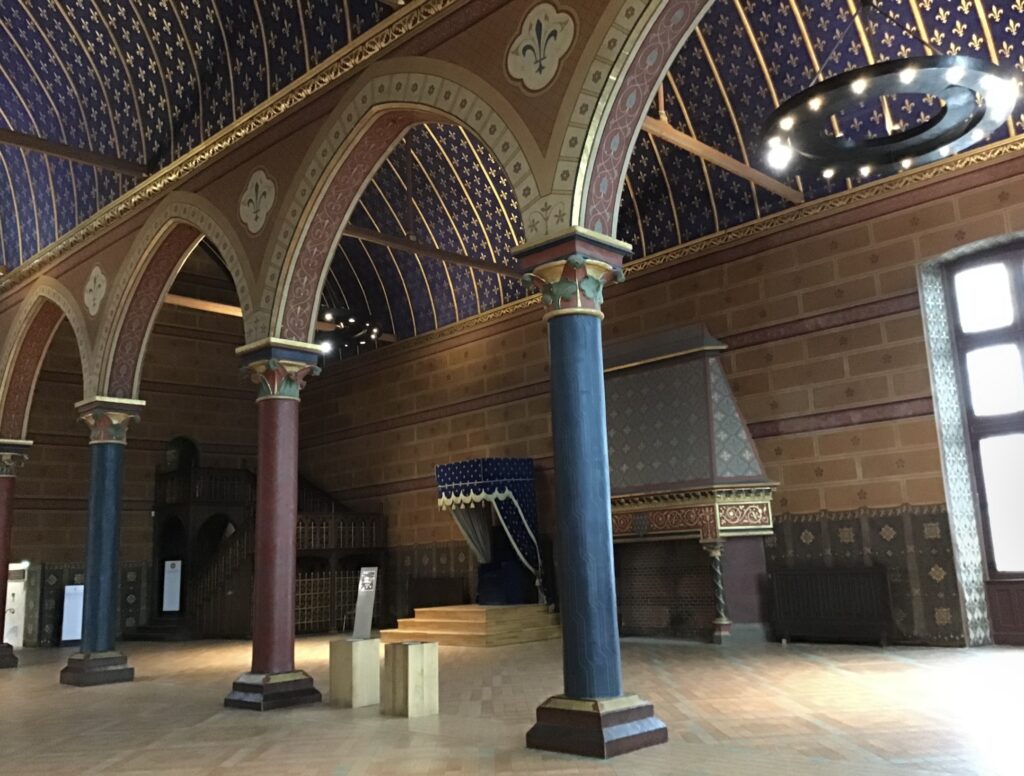
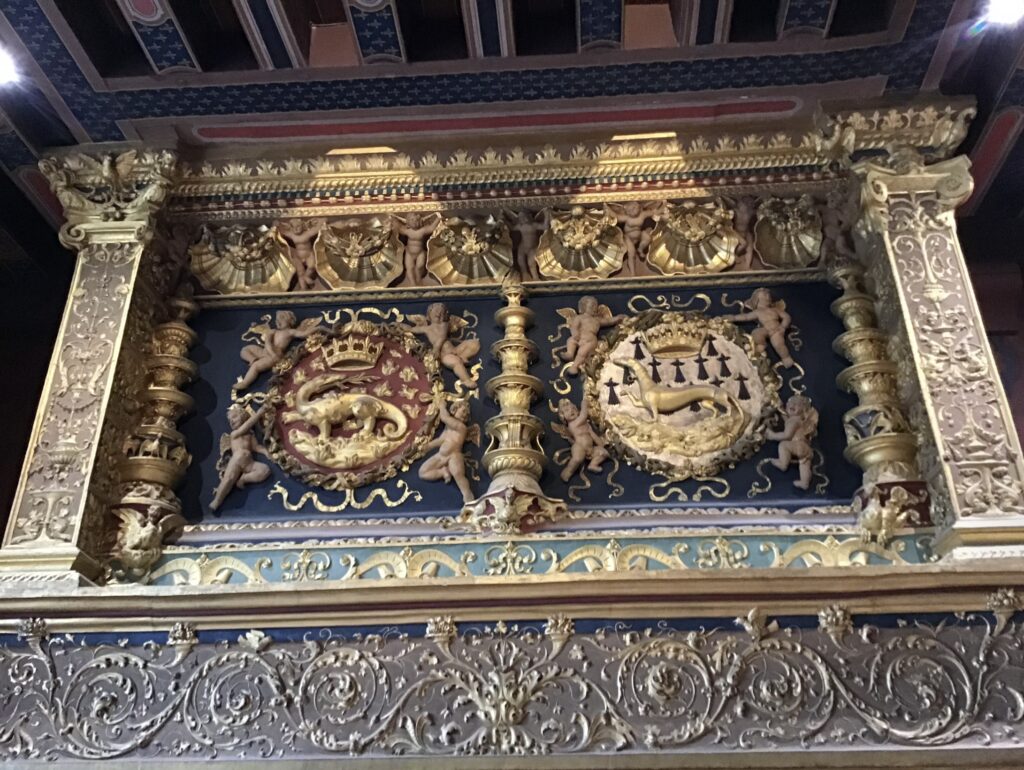
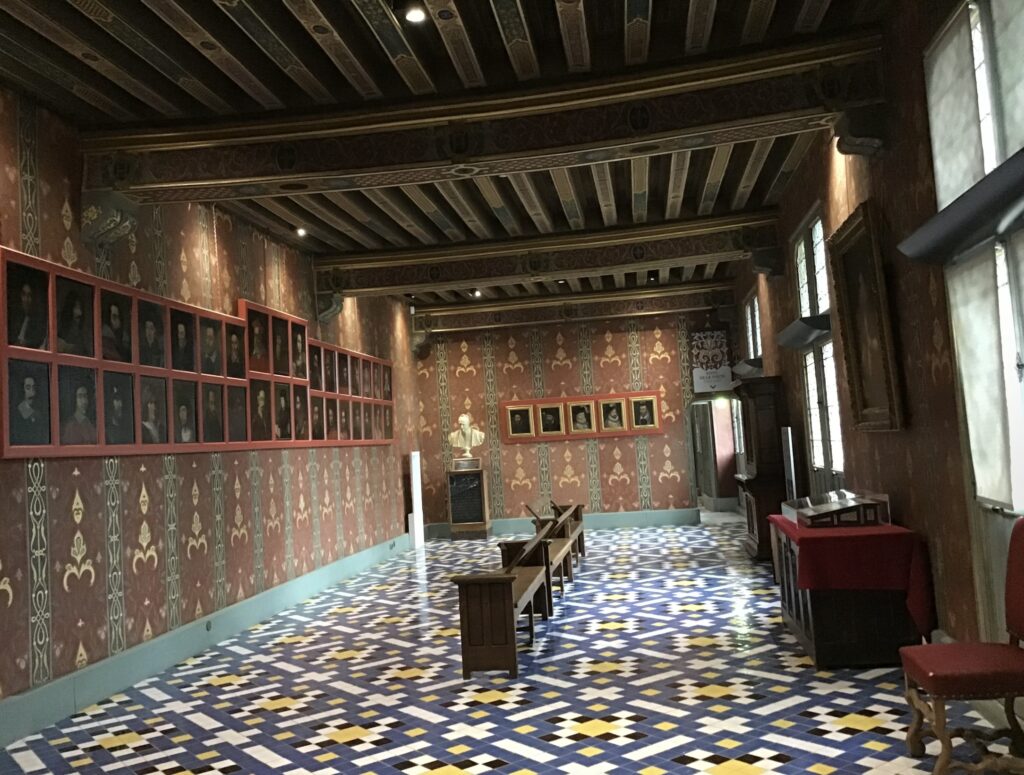
11. Cultural and Artistic Significance
- The château played a crucial role in the diffusion of Renaissance art and ideas into France. Kings and queens who resided at Amboise were known for their patronage of artists, most notably Leonardo da Vinci, who spent his last years nearby at the Château du Clos Lucé, a short distance from Château d’Amboise.
12. Underground Passageways
- The château features a network of underground tunnels and passageways, adding an air of mystery and intrigue to its historical significance. These tunnels were used for both defensive purposes and for discreet movement of royalty and soldiers within the fortified château.
Château d’Amboise, with its blend of medieval fortifications, Renaissance elegance, royal history, and connection to Leonardo da Vinci, is an exceptional monument that reflects the grandeur of the French Renaissance. It offers visitors an immersive experience into the world of French royalty and the artistic and cultural transformations of the period.
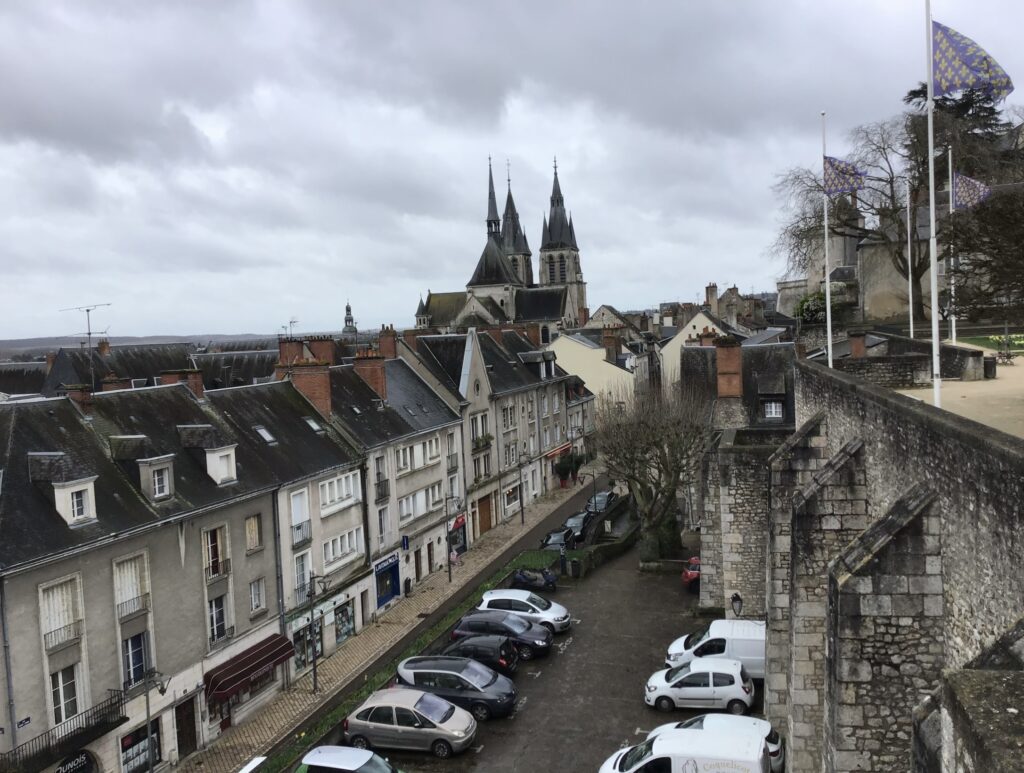
Timeline of the Château du Clos Lucé’s Origin and Development
1. 12th Century – Early Origins
- 1160: The Château du Clos Lucé (initially known as “Manoir du Cloux”) was built as a medieval fortress. It served as a fortified manor house and was primarily defensive in nature. It was located near the Château d’Amboise, which was strategically important due to its proximity to the Loire River.
2. 15th Century – Transition to a Royal Residence
- 1490: Charles VIII, who had been raised at the nearby Château d’Amboise, purchased Clos Lucé and transformed it into a royal residence. The château was adapted from its medieval origins into a more comfortable, Renaissance-style home. It became part of the royal estates, providing accommodations for important guests and figures.
3. 1516–1519 – Residence of Leonardo da Vinci
- 1516: At the invitation of King Francis I, Leonardo da Vinci moved to France and took up residence at the Château du Clos Lucé. The king provided him with the château as a residence, and Leonardo brought with him some of his most important works, including the Mona Lisa. During his stay, Leonardo worked on numerous projects and sketches, including plans for architectural, mechanical, and engineering designs.
- 1519: Leonardo da Vinci passed away at the Château du Clos Lucé on May 2, 1519. His close relationship with Francis I allowed him to spend his final years peacefully, continuing his work in various fields of art and science.
- Leonardo’s presence at Clos Lucé established the château as an intellectual hub, linking it directly with the brilliance of the Renaissance.
4. 16th–19th Centuries – Continued Use and Preservation
- After Leonardo’s death, the Château du Clos Lucé remained part of the royal estates and was occasionally used as a secondary residence. Over the years, it was inhabited by members of the French court and visiting dignitaries.
- During the 17th and 18th centuries, the château underwent minimal changes. While not as prominent as the nearby Château d’Amboise, it retained its significance due to its association with Leonardo da Vinci.
5. 20th Century – Restoration and Public Opening
- In the 20th century, the Château du Clos Lucé was restored to preserve its Renaissance character and to commemorate its connection with Leonardo da Vinci.
- In 1954, the château was opened to the public as a museum dedicated to Leonardo’s life and works. The restoration focused on recreating the atmosphere of da Vinci’s time, including the rooms where he lived and worked.
- Today, the château is a major cultural and tourist attraction, showcasing recreations of Leonardo’s inventions, models, and interactive exhibits.
Architectural Features of the Château du Clos Lucé
1. Medieval Origins
- The Château du Clos Lucé retains traces of its medieval origins, particularly in its stone structure, fortified walls, and towers. While it was later transformed into a more comfortable residence, some elements of its original defensive purpose remain visible, such as thick walls and small windows typical of medieval architecture.
2. Renaissance Transformation
- Charles VIII initiated changes to the château, giving it a more Renaissance character, reflective of the period’s architectural style. These changes included:
- Larger windows to allow more light into the residence, a hallmark of Renaissance design.
- The addition of decorative elements such as carved stone details around windows and doors, showing the influence of Italian Renaissance aesthetics.
3. Interior Layout and Renaissance Comforts
- The château is relatively small compared to grander palaces but features a well-designed interior layout. During the time of Leonardo da Vinci, the residence was adapted for comfort and intellectual pursuits:
- Spacious rooms for living and working, such as Leonardo’s study, where he designed and created many of his famous sketches.
- Fireplaces and tapestries adorned the walls, providing warmth and decoration typical of the period.
- The dining room and bedroom are arranged to reflect Leonardo’s lifestyle, including some of his personal belongings and artworks.
4. Underground Tunnels
- One of the château’s more intriguing features is the underground tunnel that connects the Château du Clos Lucé to the nearby Château d’Amboise. This tunnel, built during the Renaissance period, allowed for discreet communication between the two royal residences. It is believed that King Francis I used it to visit Leonardo da Vinci privately.
5. Leonardo’s Workshop and Gardens
- The workshop of Leonardo da Vinci is one of the most historically significant rooms in the château. This space has been preserved to show where the artist and inventor worked on his many projects.
- The gardens surrounding the château have also been landscaped to reflect the Renaissance era. They include replicas of Leonardo’s designs and inventions, such as bridges and mechanical devices, making the grounds a living museum of his genius.
6. Da Vinci Exhibits
- The château’s modern role as a museum includes interactive exhibits showcasing da Vinci’s inventions, many of which have been recreated based on his original sketches. These models, from flying machines to mechanical devices, are displayed both inside the château and throughout the gardens.
Summary:
The Château du Clos Lucé began as a medieval fortress in the 12th century and was transformed into a Renaissance residence under Charles VIII in the 15th century. It gained lasting fame as the residence of Leonardo da Vinci from 1516 to 1519, where he lived and worked under the patronage of King Francis I. Architecturally, it blends medieval and Renaissance styles, featuring comfortable living spaces, a workshop for da Vinci, and beautifully landscaped gardens filled with exhibits related to his inventions. Today, the château is a museum dedicated to the life and works of Leonardo da Vinci, preserving his legacy.
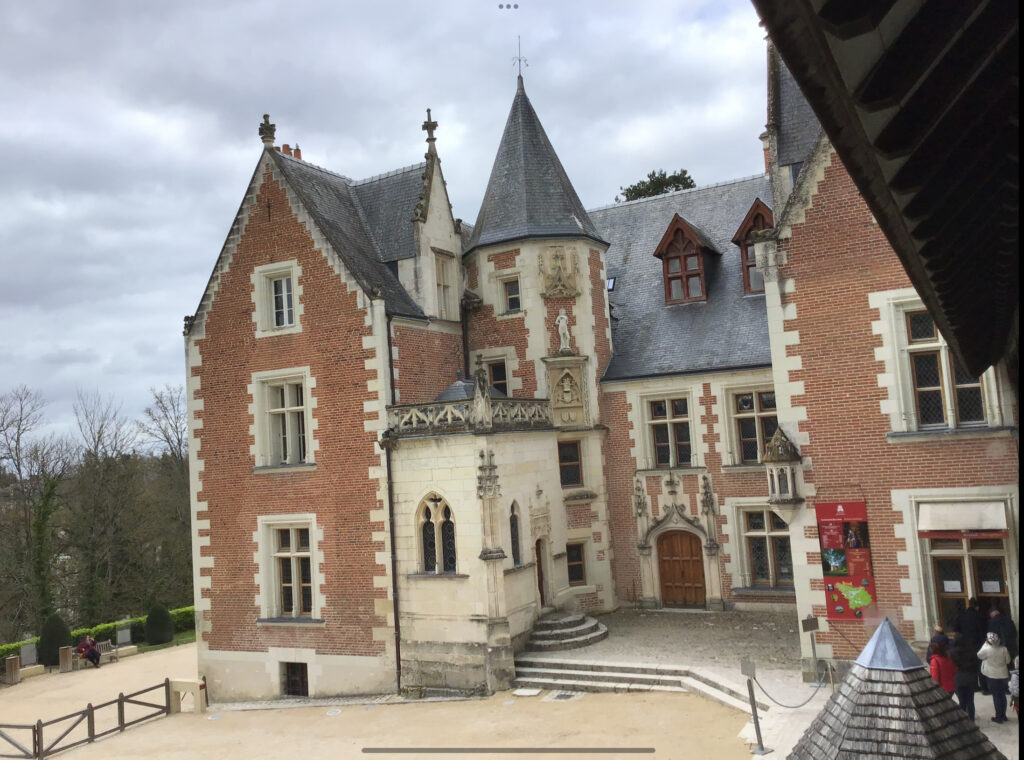
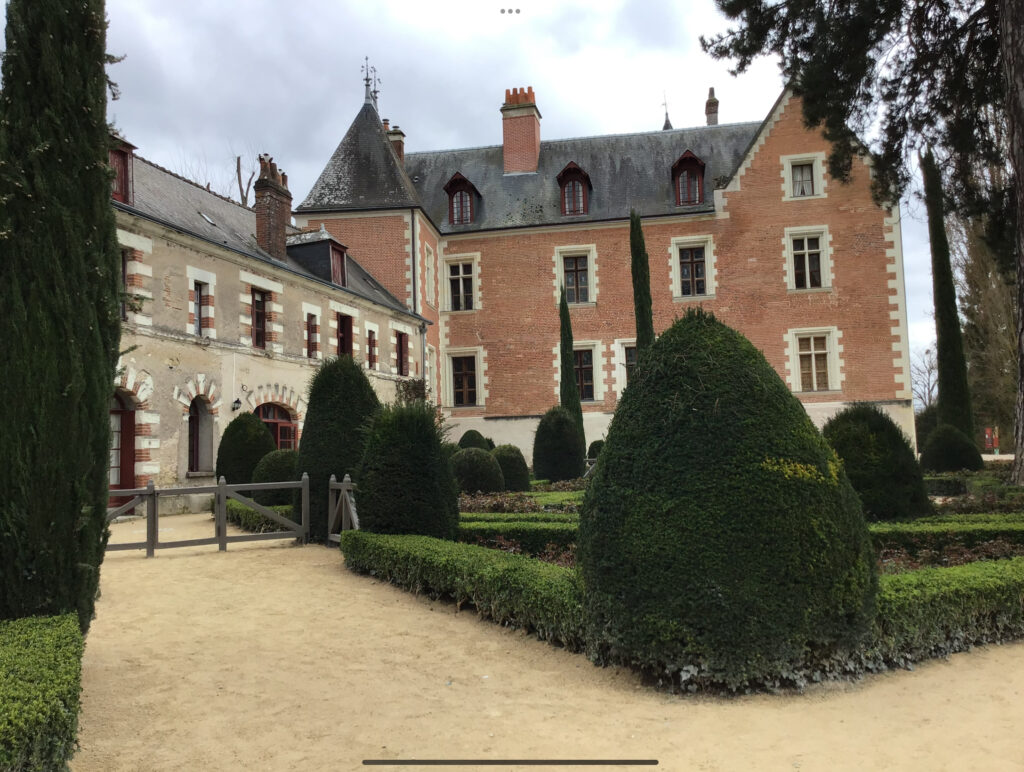
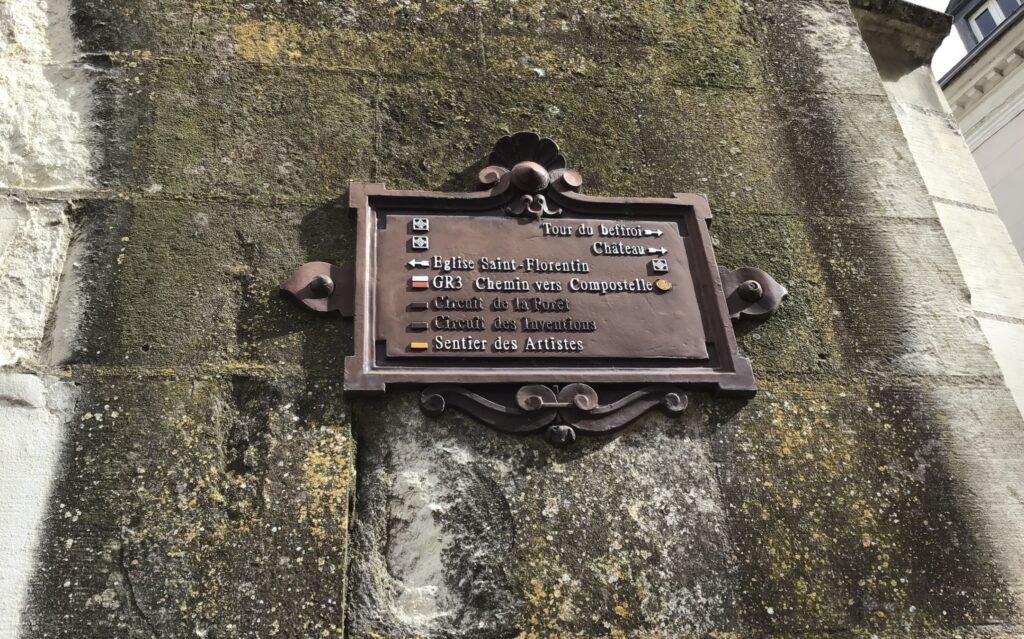
A one-day itinerary for visiting Amboise offers a perfect blend of history, culture, and local cuisine. Below is a suggested itinerary that incorporates some of the town’s top attractions and highlights the local food scene.
Morning
8:30 AM – Breakfast at Pâtisserie Bigot
- Start your day with a delicious French breakfast at Pâtisserie Bigot, a charming and historic bakery in the heart of Amboise, just steps away from the Château d’Amboise.
- Try a selection of freshly baked croissants, pain au chocolat, or tartes. Pair them with a café au lait while sitting outside and soaking in the view of the château.
9:30 AM – Visit Château d’Amboise
- Head to the nearby Château d’Amboise, one of the most iconic landmarks in the Loire Valley. Explore its beautifully restored rooms, grand halls, and terraces with panoramic views of the Loire River.
- Don’t miss the Saint Hubert Chapel, where Leonardo da Vinci’s tomb is located.
- Stroll through the château’s lush gardens, admiring the Renaissance architecture and royal history.
11:00 AM – Explore Clos Lucé
- Walk about 10 minutes to the Château du Clos Lucé, the final residence of Leonardo da Vinci. This charming Renaissance mansion is filled with models of da Vinci’s inventions and exhibits dedicated to his life and work.
- Explore the beautiful gardens, which feature recreations of his mechanical designs and bridges. The gardens are peaceful and offer an intimate glimpse into da Vinci’s genius.
Afternoon
12:30 PM – Lunch at L’Epicerie
- For a taste of the local cuisine, have lunch at L’Epicerie, a cozy bistro located in a historic building just a short walk from Clos Lucé.
- The menu highlights Loire Valley specialties such as rillettes, goat cheese (chèvre), and dishes made with local produce. Pair your meal with a glass of Vouvray or Touraine wine from the region.
- Opt for traditional French dishes like duck confit, tartiflette, or quiche.
2:00 PM – Walk Along the Loire River
- After lunch, take a relaxing stroll along the Loire River, enjoying the scenic views and the tranquility of the riverside. You can cross the Pont du Maréchal Leclerc to get a perfect view of the town and château from the opposite bank.
- This leisurely walk allows you to take in the beauty of Amboise and its surroundings, offering plenty of photo opportunities.
2:30 PM – Visit Amboise’s Old Town
- Spend some time exploring the medieval streets of Amboise’s Old Town. The cobblestone streets are lined with charming boutiques, antique shops, and artisan stores where you can find local products like Loire Valley wines, cheeses, and honey.
- Make a stop at the Maison des Vins to sample and purchase local wines. The Loire Valley is famous for its white wines, especially Vouvray and Sauvignon Blanc.
Mid-Afternoon
3:30 PM – Café Break at La Pause du Temps
- Take a break at La Pause du Temps, a cozy café in the Old Town. Enjoy a mid-afternoon snack with a slice of tarte Tatin (apple tart) or a refreshing crêpe.
- Pair it with a hot chocolate or herbal tea as you rest up for the rest of the day.
Evening
4:30 PM – Visit the Château Gaillard Gardens
- Head to the Château Gaillard, just a short walk from the center of Amboise. This Renaissance-era estate is surrounded by beautiful gardens known as “les Jardins du Roy”, famous for being some of the first Italian-style gardens in France.
- Walk through the orange groves and admire the Renaissance-inspired landscaping. The peaceful and less crowded setting provides a lovely way to end the day’s sightseeing.
6:30 PM – Dinner at Les Arpents
- Conclude your day with dinner at Les Arpents, one of the top-rated restaurants in Amboise. This intimate restaurant focuses on local ingredients and seasonal dishes with a modern twist.
- Start with an appetizer like foie gras or Loire Valley fish. For the main course, consider trying slow-cooked lamb or fresh pike-perch. The restaurant also has an excellent selection of Loire Valley wines to complement your meal.
8:00 PM – Evening Walk and Views of the Château d’Amboise
- After dinner, take a leisurely evening walk around the château to enjoy the illuminated view of the Château d’Amboise and the peaceful ambiance of the town at night.
This itinerary provides a balanced mix of historical exploration, scenic walks, and opportunities to enjoy the best of Amboise’s local food scene.
